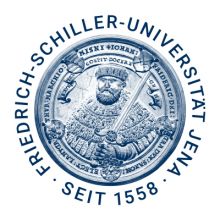More women than ever are running German universities, but one group is still conspicuously absent from the top echelons of higher education: leaders born in what was once East Germany.
An analysis by the Centre for Higher Education (CHE) found that 52 of 182 public higher education institutions in Germany currently have a female rector or president, an increase of 3.7 percentage points over the 2021 tally, with a 9.5 per cent rise at universities.
Although still some way off parity, women filled 12 of the 14 appointments made in 2022, tallying with an increase in female leaders worldwide. It follows efforts by the German government to address gender inequality in universities. Among the 167 institutions that provided the birthplace of their leader, however, just 15 nationwide and only one of the 2022 appointees came from the former East Germany.
Isabel Roessler, lead author of the study and a senior project manager at CHE, said German university presidents “continue to fail to reflect the heterogeneity of their students on campus in terms of their origins and educational biographies”.
One German university leader, Angela Ittel, president of the Braunschweig University of Technology, said a lot of the problems with the under-representation of certain groups dated back to reunification.
She comes from North-Rhine Westphalia, Germany’s most populous state and the most common state of origin for university presidents, according to the CHE analysis.
Professor Ittel studied and worked at universities in Florida and California before returning to Friedrich Schiller University Jena as a postdoc in the mid-1990s. “I came back to an East German university when I came back from the US, and most of the higher professors were male and West German,” she told Times Higher Education.
“The East German university system was pretty dominated by the West’s [at that time]. A lot of professors moved to the West and sort of took over the professorships over there,” she said. “That also led to now not having any female leaders in German universities from the East.”
When CHE first surveyed the CVs of university presidents in 2018, just 19 institutions were led by women and none had been born in the former German Democratic Republic.
Aside from the under-representation of former East Germans, Dr Roessler said, it was “striking” how many leaders had spent most of their career in higher education. Two-thirds of university leaders and 70 per cent of those at universities of applied science had worked at their institution before being appointed its president and had been there for an average of 13 years.
That tendency towards insularity also extends to nationality, with the CHE study finding just five leaders who were born abroad.
Register to continue
Why register?
- Registration is free and only takes a moment
- Once registered, you can read 3 articles a month
- Sign up for our newsletter
Subscribe
Or subscribe for unlimited access to:
- Unlimited access to news, views, insights & reviews
- Digital editions
- Digital access to THE’s university and college rankings analysis
Already registered or a current subscriber? Login










